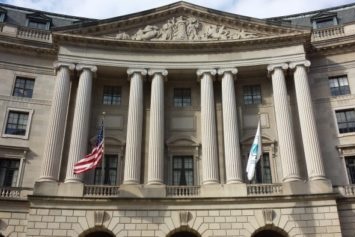The EPA’s Office of Enforcement and Compliance Assurance (OECA) has issued a draft document on enhancing planning and communication between the Agency and the states in civil enforcement and compliance assurance.

The draft is the latest in a series of events that began in January 2018 when the OECA released interim guidance intended to “begin the movement toward a more collaborative partnership” between the EPA and states authorized to implement and enforce federal environmental laws and regulations with regard to “all EPA compliance assurance activities, such as inspections and enforcement.” At about the same time, the EPA and the Environmental Council of the States (ECOS) launched a workshop on state and federal cooperation that, among other things, sought to articulate “principles underlying a cooperative federal-state relationship when seeking compliance assurance in states with delegated program authority” (see the report here). These activities have contributed to the current draft document.
A Work in Progress
The draft addresses only those federal programs for which states have received the EPA’s authorization; the EPA may not enforce state regulations that do not implement federal requirements. By law, the EPA is also empowered to enforce authorized programs. Historically, this has sometimes resulted in duplicative enforcement or no enforcement at all because a state or the EPA has failed to tell the other what it plans to do or not do. Effective collaboration on enforcement and compliance assurance falls under the heading of cooperative federalism, which ECOS defines as the “codification of expectations regarding the state/EPA relationship in enforcement for state delegated programs and better aligning the state/federal enforcement approach with compliance assistance efforts and programmatic functions.”
ECOS also describes the EPA/state relationship as a “work in progress” and notes that the workshop produced “over 25 effective practices to improve state/EPA collaboration and coordination on enforcement and compliance activities”.
Political Appointees
“Cooperative, periodic, and early joint planning and regular communication between the EPA and states is essential to promote enhanced, shared accountability between federal and state enforcement authorities,” the EPA’s draft memo states. “A ‘no surprises’ principle is the foundation of joint work planning and will minimize the misunderstandings that can be caused by the lack of regular, bilateral communication.”
One point made in the memo is that most discussions of work sharing, inspections, and enforcement actions will occur between EPA regional and state career managers. Generally, only those issues that cannot be resolved by career managers will be brought to the attention of state and EPA political appointees (e.g., the OECA’s assistant administrator). In other words, regulated entities should not assume that any perceived bias of a political appointee will factor into an enforcement action.
Two-Way Communication
The draft memo includes the following proposed principles and actions:
- Joint EPA/state planning. Cooperative, periodic, and early joint planning and regular communication between federal and state enforcement authorities are essential to promote enhanced and shared accountability. With increased EPA cooperation and transparency, the Agency expects the states to respond in kind. The overall goal of joint planning is the sharing of enforcement responsibilities with a clear agreement on the roles of the EPA and the state in individual inspections and formal enforcement actions. Such agreements cannot be reached if the EPA or a state is unaware of the actions of the other.
- Inspection planning. Inspection planning will avoid duplicate efforts, improve efficiency, and reduce unnecessary burdens on the regulated community and could also provide EPA regions and states with more flexibility in setting and adjusting inspection targets and compliance monitoring strategies. EPA regions and the states should avoid duplicative or overlapping inspections that would lead them to inspect the same facility for the same regulatory requirements within a year. Multiple inspections by the EPA and the states may, however, be appropriate for complex sites where the inspections will focus on different regulatory requirements or where the EPA and a state agree that multiple inspections serve a valuable purpose.
- Enforcement planning. The EPA should communicate with states when the Agency believes that an enforcement action is warranted in a state. The communication should include a review of the EPA’s observations and findings from inspections and other case development techniques. The communication should include a discussion about whether the enforcement action should be federal, state, or joint and the type of action to be taken. Where the EPA is taking an enforcement action in a state, the EPA should notify the state before notifying the facility.
- Elevating an issue. Most discussions of work sharing, inspections, and enforcement actions are likely to occur between EPA regional and state career managers. Effective collaboration and shared accountability need appropriate communications up and down the respective management chains within the EPA and the states. This does not mean that every enforcement issue must be elevated to the highest possible level within an organization. It does mean that the more significant the issue, the more likely it will be appropriate to brief more senior managers. Also, a breakdown in two-way communication between a state and the EPA should be elevated to senior management in both organizations.
Finally, the draft emphasizes that the EPA will defer to states that conduct inspections and enforcement under federal programs the states are delegated to implement. But there are exceptions. For example, the EPA is expected to take the lead when states request that the Agency do so; when there are violations of a National Compliance Initiative; when there are public health and environmental emergencies; or when the state lacks the equipment, resources, or expertise to take the lead.
Comments on the draft will be accepted for 30 days following its publication in the Federal Register.
